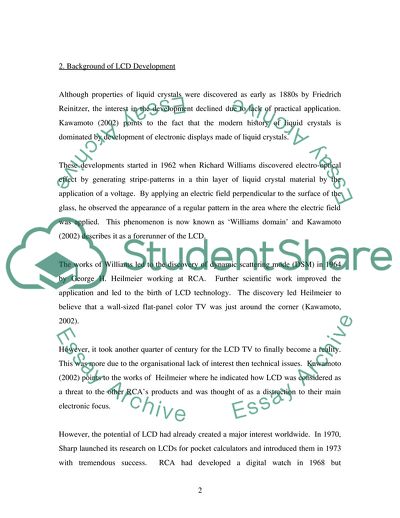Cite this document
(A Liquid Crystal Display Assignment Example | Topics and Well Written Essays - 2836 words, n.d.)
A Liquid Crystal Display Assignment Example | Topics and Well Written Essays - 2836 words. Retrieved from https://studentshare.org/information-technology/1712728-introductory-report-on-a-liquid-crystal-display-lcd-for-which-supply-chain-management-is-important-using-desk-research
A Liquid Crystal Display Assignment Example | Topics and Well Written Essays - 2836 words. Retrieved from https://studentshare.org/information-technology/1712728-introductory-report-on-a-liquid-crystal-display-lcd-for-which-supply-chain-management-is-important-using-desk-research
(A Liquid Crystal Display Assignment Example | Topics and Well Written Essays - 2836 Words)
A Liquid Crystal Display Assignment Example | Topics and Well Written Essays - 2836 Words. https://studentshare.org/information-technology/1712728-introductory-report-on-a-liquid-crystal-display-lcd-for-which-supply-chain-management-is-important-using-desk-research.
A Liquid Crystal Display Assignment Example | Topics and Well Written Essays - 2836 Words. https://studentshare.org/information-technology/1712728-introductory-report-on-a-liquid-crystal-display-lcd-for-which-supply-chain-management-is-important-using-desk-research.
“A Liquid Crystal Display Assignment Example | Topics and Well Written Essays - 2836 Words”, n.d. https://studentshare.org/information-technology/1712728-introductory-report-on-a-liquid-crystal-display-lcd-for-which-supply-chain-management-is-important-using-desk-research.


